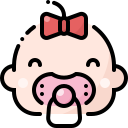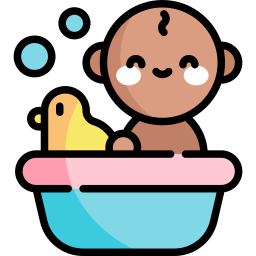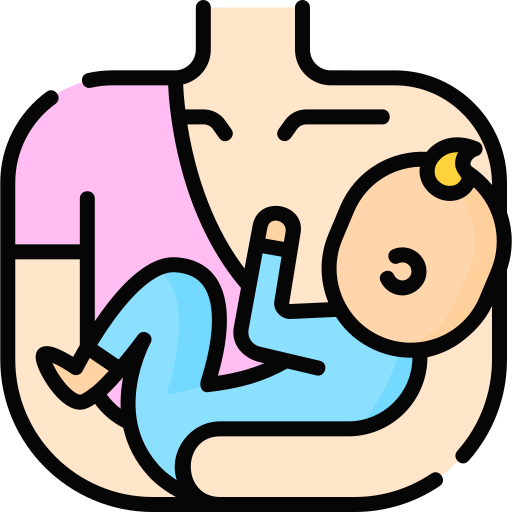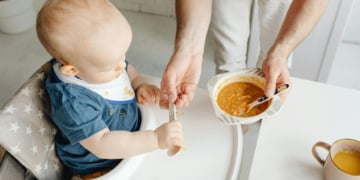Key Notes
- Massage your breasts gently
- Try different positions, use a support pillow, and wear loose clothing. You can also try using a breast shield or massaging your breast
- If the pain is severe or impacting your ability to breastfeed, talk to your doctor. They can help rule out any potential causes and offer suggestions for treatment
- With a little trial and error, you should be able to find a solution that works for you and helps to ease the pain while you continue breastfeeding
- Use over-the-counter medication and ointment
One common issue that many mothers face is pain in their breasts. This can be quite frustrating and discouraging. Today, we will discuss some of the most common causes of breast pain while breastfeeding and provide tips on how to treat it.
We hope that this information will help make the breastfeeding experience a little bit easier for you!
How to Treat Painful Breast While Breastfeeding
Apply An Ointment:
A lanolin-based ointment can be applied to your nipples after each feeding. This will help soothe and protect your nipples from further irritation. Make sure you wash your hands thoroughly before applying the ointment, and apply it sparingly, as too much can make nursing uncomfortable for both you and your baby.
It’s also important to remove any excess ointment before breastfeeding your baby.
Use Soothing Packs
If you’re experiencing pain while breastfeeding, try using soothing packs. To make a soothing pack, simply wet a clean cloth with warm water and place it on your breast for a few minutes.
You can also purchase ready-made packs at most pharmacies. It’s important to make sure the pack is not too hot, as this can damage your skin. This method can help to relieve the pain and also encourage letdowns.
Let Your Nipples Air Out After Breastfeeding
There’s nothing quite like the relief of taking your bra off at the end of a long day. And while you may want to keep your breasts covered up if they’re sore from breastfeeding, that’s actually not the best thing for you to do. It’s important to let your nipples air out after breastfeeding, even if it’s just for a few minutes. This will help to keep them dry and free from bacteria.
Apply Cold Compress
If you are experiencing pain in your breasts while breastfeeding, one of the best things you can do is apply a cold compress. This will help to soothe the pain and reduce any inflammation. You can use a bag of frozen peas wrapped in a towel or a cold, damp cloth.
Apply the compress for 10-15 minutes at a time, as needed. It is important to make sure that the compress is not too cold, as this could damage your skin.
Proper Latching is Important
One of the most important things you can do to prevent and treat painful breast while breastfeeding is to make sure your baby is properly latched on.
An incorrect latch can cause a number of problems, including pain for you and poor milk transfer for your baby.
To ensure a good latch:
- Bring your baby to your breast rather than bringing your breast to your baby. This will help them latch on correctly from the start.
- Make sure your baby’s mouth is wide open before latching on, and aim for their chin and nose to be in line with your nipple.
- As your baby latches on, their lower lip should be rolled outwards. You should hear them make a clicking sound as they attach correctly.
- Once latched on, your baby’s tongue should be flat against your breast, covering as much of the areola (the dark area around your nipple) as possible.
If you’re having trouble achieving a good latch, don’t hesitate to ask for help from a lactation consultant.
Make Sure Both You and Your Baby Are Comfortable With The Breastfeeding Position
Choose a position that you and your baby are both comfortable with. This will help to minimize any discomfort that you may feel while breastfeeding. You may need to experiment with different positions until you find one that works well for both of you. Read here: Best Upright Breastfeeding Positions.
Some common positions include the cradle hold, cross-cradle hold, football hold, and side-lying position.
There are a number of devices that can help to support your breasts while you are breastfeeding. These can include nursing bras, breast shells, and nipple shields.
Nursing bras can help to lift your breasts and provide support. Breast shells can be worn inside your bra and help to protect your nipples from becoming sore. Nipple shields can be used if you have flat or inverted nipples.
A support pillow can help take some of the strain off your back and arms while you are breastfeeding. Place the pillow behind your back and under your arm to help prop up the breast that your baby is not feeding from.
Use A Breast Shield
When your nipples are sore, cracked, or bleeding, using a breast shield can help you heal while still being able to breastfeed. Breast shields are silicone covers that fit over your nipple and are held in place with a comfortable, adjustable band. They can protect your nipple from friction and allow it to heal.
If you’re using a breast shield, you may need to increase the amount of time you spend pumping or breastfeeding to make sure your baby is getting enough milk. You can also try using a different position when you breastfeed or pump.
Wear Loose and Comfortable Clothing
Wear a supportive nursing bra that fits well. If your breasts are engorged, try a warm compress or take a hot shower before nursing to help the milk flow. It may also help to express a little milk by hand before putting the baby to the breast. Gently massage your breasts while nursing or pumping to encourage a letdown.
Take a Pain Reliever
If you have pain in your breast while breastfeeding, the first step is to take a pain reliever. These medicines can help ease the pain. It’s important to make sure you take the correct dosage for your weight and age and consult your doctor first in order to make sure is safe for breastfeeding.
You can find this information on the packaging or by asking your doctor. It’s also important to drink plenty of fluids when you take these medications.
Massage Your Breast
If you’re still experiencing pain after using a soothing pack, you may want to try massaging your breast. Start by cupping your breast in your hand and gently massaging it in a circular motion.
You can also try using a vibrating massager on your breast to help relieve pain. Just be sure to avoid massaging any areas that are sore or inflamed.
- Be Gentle
- Make Sure Your Hands Are Clean
- Use A Warm Cloth
- Ask a lactation consultant for massage techniques
Talk To Your Doctor
If you’re experiencing pain while breastfeeding, the first person you should talk to is your doctor. They can help rule out any potential causes of your pain and offer suggestions for how to best treat it.
It’s also important to let your doctor know if the pain is impacting your ability to breastfeed or causing you any other discomfort.




























